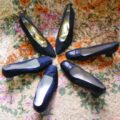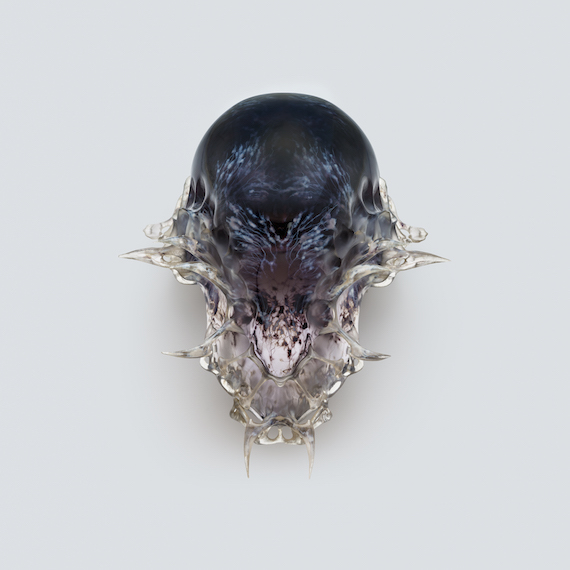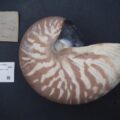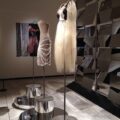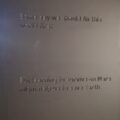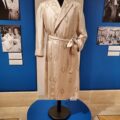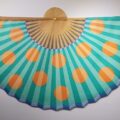Opus Anglicanum at the V and A
December 17, 2016Opus Anglicanum at the V&A is a show that fascinates on many levels, featuring popes and princes, lions and mermaids, lots of glowing gold and red and some very fine ancient embroidery techniques.
Opus Anglicanum – detailed embroidery
As you enter the show, unless you are an expert embroiderer you may be slightly bewildered by the casual throwing around of embroidery terms that is instantly employed – look, this cope has under-couching instead of the more traditional top couching! To avoid confusion, allow yourself a moment or so to glance at the richness of gold that’s on display all around you, but essentially the first thing to do is march purposefully into the second room, where a very clear video of a modern embroiderer re-creating these ancient stitches is shown in close up. You will then understand the difference in couching and underside-couching, and what the different effects are.
Opus Anglicanum – English Embroidery
Opus Anglicanum is English Embroidery, and it was so famous in the medieval years from the14th century onwards (although examples exist from the 12th century) that it was widely coveted and desired all of the world – if you could afford it. Most of the pieces which have survived are ecclesiastical garments, which have been preserved by being entombed with their owners.
Private individuals also commissioned garments decorated with Opus Anglicanum, but the fabrics disintegrated with wearing, were re-made into other garments, and, crucially, their owners were not buried in them. The process of carefully preparing a pope for the afterlife is a very good way of preserving his clothes, too, apparently. A wall panel notes that important religious figures loved to buy the high status embroideries as gifts – either for other, equally high ranking members of the church, or as gifts to themselves.
The Black Prince’s Surcoat
One secular owner of Opus Anglicanum whose surcoat has survived is The Black Prince, Edward of Woodstock (1330-1376), the father of King Richard II. He was called the Black Prince not because he was evil, although he did do a lot of pillaging and sacking, or any aspect of his physical appearance, but probably because his shield and armour were black.
A surcoat is the padded jacket that goes over the armour and would have been worn for ceremonial occasions, like jousting matches. Its brilliant colours and gleaming gold would have looked dazzling to a medieval Europe who were making dyes from plants and would have been used to seeing more muted colours in every day life.
At the moment, the Black Prince’s surcoat is not looking so brilliant because it’s been hanging in the open above his tomb in Canterbury Cathedral along with his sword, shield, helmet and gauntlets for eight centuries, and looks like a lumpy duvet that’s been accidentally washed with a few stray socks, losing almost all its colour entirely. But there are illustrated records which have survived immaculately, showing exactly what it would have looked like in its glory days. Other supporting objects in the exhibition include stained glass, metalwork and paintings to show this clothing as it was worn, or to illustrate the prevailing style of decoration at the time.
Opus Anglicanum – Stylised Lions
I love the stylised form of illustration that was popular in the medieval period. I particularly think the ways animals are depicted is lovely. The lions rampant on Richard II (1367 – 1400)’s crest, displayed here from a piece of fabric that would probably have hung from his horse’s saddle are a wonderful example. The gold lines of the embroidery, meticulously applied, beautifully flow around the design.
But aren’t lions supposed to be scary? These lions bear an interestingly close relation to the way that Chinese dragons are traditionally depicted with their large, slightly cross eyed, heavily lidded eyes and elongated body. The lions also have blue, human ears, quite human noses, a long, wriggly red tongue and a small head of curls. Lions are clearly not very often seen in medieval London. In fact, thinking about it, I wonder why it was and is the symbol of England? I mean, the fierceness of course, but lions aren’t very English, are they? And how did they even know about lions? Sailor’s tales?
Worried Mermen
My very favourite item in the Opus Anglicanum exhibition is the Fishmongers Funeral Pall. Embroidered by nuns, I partly like it because of its colours – more green and silver than red and gold. But, since this item is used to cover the coffin of important members of the Fishmongers Guild, the theme is fishy, and worried looking mermen who wear helmets and full armour on top, fishy tails beneath, and wield swords they seem anxious about support the crest of the fishmongers guild alongside a more traditional bare breasted mermaid with golden hair and a nice necklace who just wants to look in her mirror. Of course, St Peter was a fisherman, and the Guild basks in this by also featuring him, front and centre, being handed the keys of heaven by Jesus.
Opus Anglicanum – Background detail
Unfortunately there is not much more detail in Opus Anglicanum on how people made the fabrics, and who these people were. It is explained that individual embroiders could become quite famous and in demand, earning a lot of money for their products, but people around me were commenting that they must have been quite young, with sharp eyesight, and it would have been nice to know the usual age, whether they tended to be male or female, and even some names of these celebrated embroiderers, because they must be recorded.
In contrast to the Opus Anglicanum exhibition, the V&A’s exhibition of earlier this year, “The Fabric of India” had a great deal of information on how the fabric was constructed, including samples of raw material before it was spun, information on the spinning process, the weaving, dying and decorating, the different regions of India that produced variations, and photographs of modern practitioners, who traditionally were and still often are children.
Perhaps it wasn’t necessary in the Opus Anglicanum exhibition to go into exactly how the velvet background predominantly used was made, but then again where the silk embroidery thread came from, how it was dyed, and how the metal thread was created could have been an interesting expansion.
Tiny tiny stitches
Also, the viewers demanded magnifying glasses to see the detail of the tiny stitches. Even better, I think, would have been built in magnifying panels. The light is necessarily quite low to preserve the fabrics. So yes, bring a magnifying glass, or at least your glasses, because these wonderful works of Opus Anglicanum deserve a close up view.
Opus Anglicanum: Masterpieces of English Medieval Embroidery is on at the V&A Museum until 5th Feb 2017



